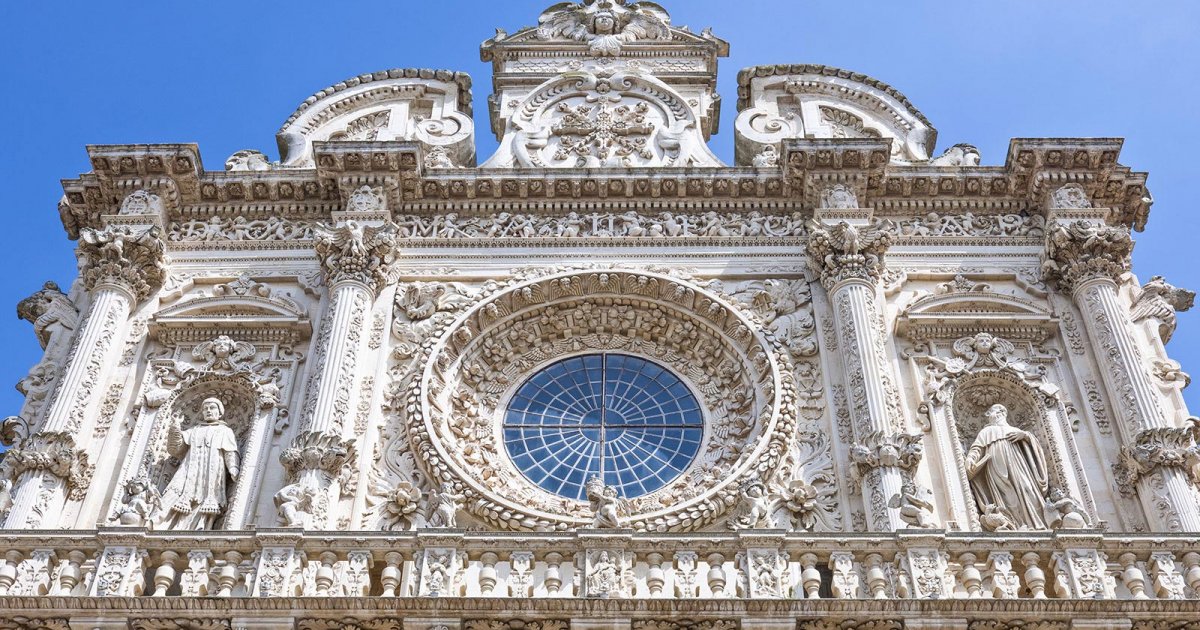BASILICA OF SANTA CROCE, Exterior
 Language: English / USA
Language: English / USA
Work on the construction of the Basilica resumed in 1606, when Francesco Antonio Zimbalo added the main portal with two pairs of Corinthian columns to the facade, as well as the two side doors, with a distinctive, striking design far removed from the style of Riccardi. Take a look at how the central door overlaps the blind arches, and how the coats of arms at the top of the side doors break up the harmonious circular design of the rose windows.
The upper part of the facade is the work of Giuseppe Zimbalo, the son of Francesco Antonio, the finest architect of the area in the 17th century, assisted here by the creative genius of the sculptor Cesare Penna, also from Lecce.
Penna sculpted the extraordinary Baroque rose window, one of the finest in the history of modern art, featuring elaborately decorated leaves and circles, framed by two Corinthian columns and flanked by niches containing statues of Saint Benedict and Saint Celestine.
Giuseppe Zimbalo was responsible for the overall design and for the topmost part, known as the fastigium.
Although the decorations on the facade might appear chaotic to us today, the symbolic language had a precise meaning for the time.
The lower part represents the pagan world that is to be saved by the sacrifice of Christ on the cross. Look at the top of the columns, where you can see scandalous naked figures and bizarre monsters holding up the balcony!
Above them, the cherubs on the cornice are holding the papal tiara and the crown, symbolizing spiritual and temporal power. What the facade is telling us is that it is the powers of the Crown and the Church that guarantee justice on earth.
Above the balustrade, it is spirituality that triumphs, with the large rose window symbolizing the light of God, flanked by the niches with the saints and the figures of Faith and Strength at the sides. Finally, on the top part, the architecture highlights the central element, on which a cross is sculpted, the symbol of Christ’s martyrdom.
An interesting fact: if you have sharp eyesight, take a close look at the large rose window. Sculpted on the outside of the last ring of leaves, you’ll see a number of human heads. One of the figures on the left has a large nose: it is traditionally believed to be a self-portrait of the sculptor – a selfie made with his bare hands!



